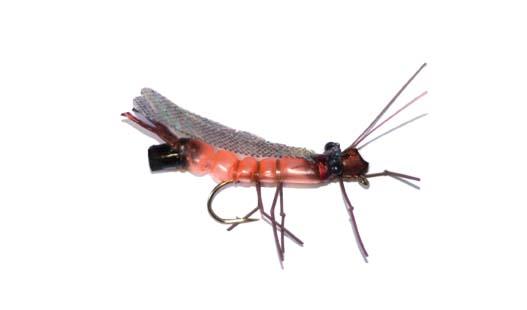The Unsinkable Dry Fly
When it comes to tying dry flies, nothing is more important than how realistic a fly looks and how well it floats. There are many fly-tying techniques that can produce an almost unsinkable dry fly, but they usually require large quantities of foam, animal hair, and hackle feathers. In addition, the insects fly tiers attempt to emulate have intricate bodies, wings, legs, antennae, and tails, making it hard to tie a realistic dry fly… at least until now.
A new technique uses heat shrink to create a tube body that is filled with air, which gives the dry fly unsurpassed floatation without foam, animal hair, or hackle feathers. As you can see, a small amount of hackle feather is applied parachute-style (primarily to mayflies) to stabilize them so they float upright and are truly unsinkable.
Materials
There are different types of heat shrink, but the most popular and least costly is the 2-to-1 standard wall polyolefin heat shrink tubing. The 2-to-1 refers to the maximum amount of shrinkage (50% or 1/2 its original diameter) that occurs when heated.
The tubing ranges from 3/64” to 6 inches or more in diameter. Usually anything more than 1/4” is not practical for fly tying, and the 3/64" and 3/32” sizes are the most convenient. It also comes in a variety of sizes and colors including, clear, which is perfect for tying dry flies.
You can buy heat shrink on the internet, but most retail stores carry a limited range of colors and sizes. If you want to buy large quantities (100-foot spools), try B&B Trading (bb-trading.com); for smaller quantities (four-foot sections), try Action-Electronics.com. Both have a fair selection of colors and sizes, reasonable prices, and fair shipping rates.
Tools
Other than normal fly tying tools, the only tool you need is a 15-watt (or less) soldering iron to seal and shape the heat shrink. Sealing the ends is important to form the air bubble to provide floatation. By using the soldering iron, a tier can make the end of the heat shrink tube small enough to seal with a thick super glue (Zap-a-Gap), soft enough to crimp with pliers or seal with thread pressure. Even at 15-watts, some soldering irons have a tendency to get too hot, thus it may be advisable to have a soldering station that works with the soldering iron to regulate the heat output.
Fly tying is a creative activity, and more ideas keep coming as fly anglers find out how well these flies perform. They're perhaps a little harder to tie in smaller sizes (18 and less), but they're worth it. Check out unsinkableflies.blogspot.com for recipes.
David H. Cowardin has been tying flies for more than 20 years and is author of the book Unsinkable Dry Flies. He developed the unsinkable dry-fly tying method in 2004 and continues to refine and improve tying techniques with heat shrink.












